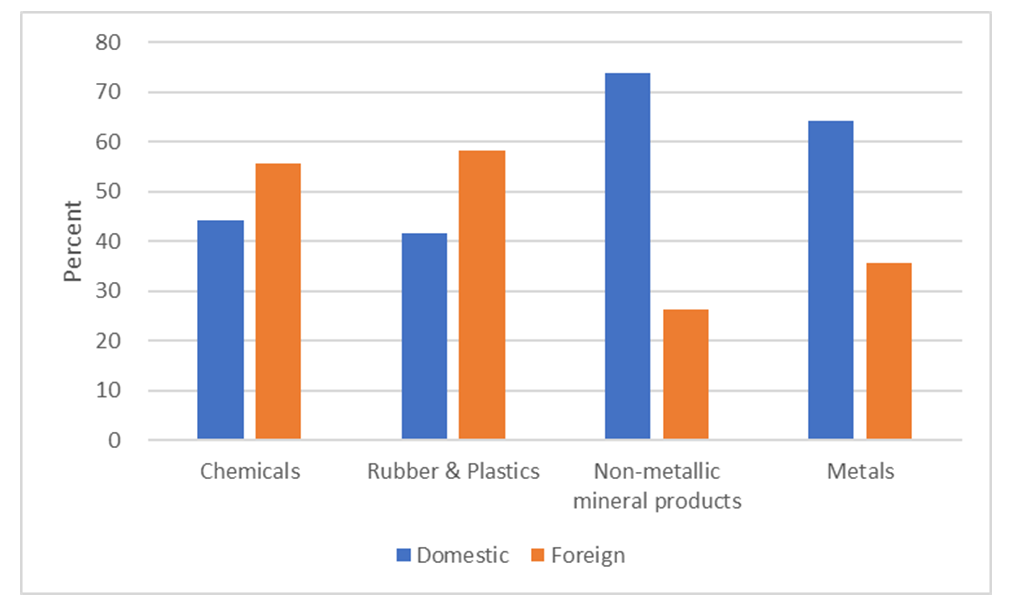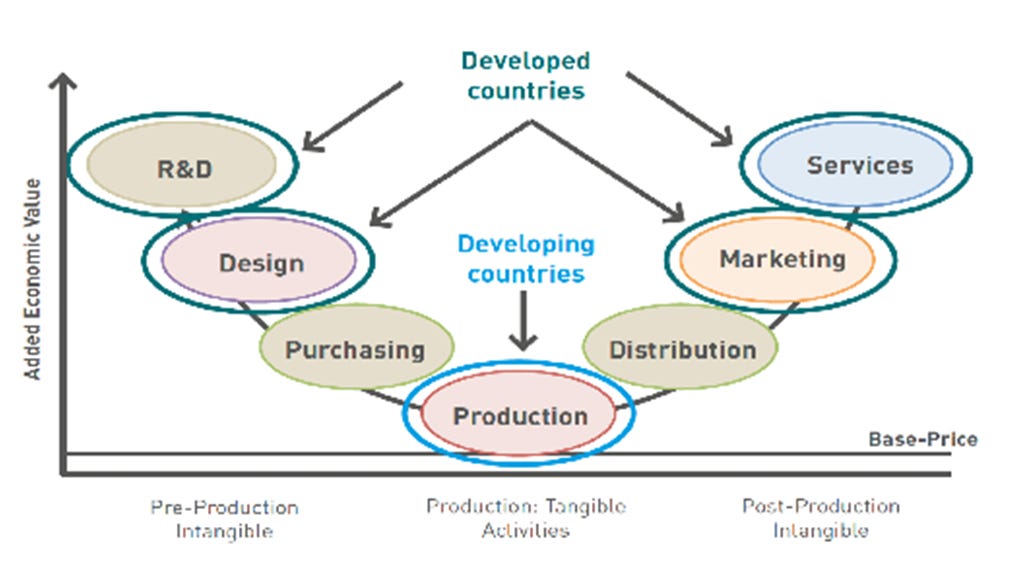Increase the sanctions on exports to russia!
Spoiler: The export sanctions are working even though the Kremlin says the opposite. The fact that increasing oil prices have increased russia’s current account is not a sign of success. russia’s imports have decreased drastically due to export sanctions on products that russia needs to kill civilian Ukrainians. The plunging imports are also due to non-sanctioning countries' hesitation to export to russia because of fear of being on the wrong side of history.
But more export sanctions are necessary. Most export sanctions refer to high-technology products that can be used to kill Ukrainians. That is not enough. Not only chips and electronic components are used in the weapons and weapons systems that putin uses to kill Ukrainians. Also plastics, rubber, metals, textiles and other types of materials are needed.
Including also such products in the export sanctions will make it even more difficult for putin to fight his genocidal war. And secondary sanctions should be imposed to prevent other countries to use sanctioned countries' products in exports
Imposing secondary sanctions are important because weapons are made by different industries located all over the world. The production in global value chains makes putin's industries more sensitive for sanctions. By excluding products from global value chains reaching russia, russian industries' abilities to produce more weapons will be severely limited.
russian imports are plunging due to export sanctions...
Paul Krugman explains why the russian trade account surplus is not a sign of success. It is a failure due to the plunging imports. After all, the point of exports is to get money to increase your consumption. Or in putin's case, buy stuff to make weapons. The plunging imports are due to export sanctions from countries who don’t want to supply putin’s death machine. Here's a graph provided by Math Klein showing the effect of export sanctions on russian imports.
Because of export sanctions on high-tech goods, russia is running out of Iskander and Kalibr missiles. More and more missiles attacks are carried out with soviet-made X-22 missiles. The Iskander and Kalibr missiles contain chips and electronics aiding to computers to hit its targets. Key parts of that stuff are made in USA, the Netherlands, and other countries. And this goes for precision artillery systems, air-defence systems and helicopters too. russian weapons are packed with microchips from the USA and other countries. And the russian industry is poorly equipped to produce it themselves. This is why russians have begun to use chips and electronics from domestic appliances in their tanks. And the lack of chips and semiconductors are crippling in the whole russian economy as Financial TImes, the New York Times and BBC report.
...and decreasing exports to russia from non-sanctioning countries.
Also exports from countries that have not sanctioned russia, have declined by some 50% according to Matthew Klein. The reluctancy of exporting to russia appears to be fear of seen as helping putin to kill Ukrainians. Secondary sanctions may explain part of this reluctancy.
The US government has imposed secondary sanctions on high-tech products. Such sanctions explicitly forbid other countries to use US-made products in the final products exported to Russia. The CCP will think twice before circumventing those sanctions since the Chinese are in turn heavily dependent on high-tech inputs from sanctioning countries, especially USA.
The US government's sanctions are smart sanctions which take into consideration that weapons and weapons systems are produced in global value chains. And this matters as I show here
where I decomposed the Chinese value-added shares in Russian final demand for Computers & Electronics and Machinery. Countries that sanction exports to Russia account for almost 20% and 10% respectively of the Chinese value-added shares of Russian final demand for these goods
russian weapons are also made of metal, rubber, plastics, and textiles. Export sanctions of those would make it even more difficult for putin's industries to produce weapons to kill Ukrainians.
The russian economy is heavily dependent on imports of all manufacturing goods. The foreign value added share of russian final demand for all manufacturing products amounts to some 40%. That's a lot for a large country. The reliance of import shows up in manufacturing industries which produce stuff that is needed to kill Ukrainians which I showed in my previous post Putin’s mistakes.
Weapons and weapon systems are also contain a lot of rubber, plastics, minerals and metals. You can't produce that stuff without chemicals. Chemicals are needed in almost every production process, rubber is used for tires, cables and more, and metal and plastics are everywhere.
putin's industries are sensitive to export sanctions also for these products. Foreign value added accounts for more than 50% of final russian demand for products made by Chemicals and Rubber & Plastics industries. Sanctions of exports of these industries' products which can be used to make weapons would create problems for putin, see figure below.
Source: OECD database. Trade in value added indicators. Note: the information in the figure is based on “Indicators based on the origins of Value Added in Final Demand” https://www.oecd.org/sti/ind/measuring-trade-in-value-added.htm
A lot of these products are already sanctioned by the EU as you can see in the so far six sanction packages. But to make them bite better, secondary sanctions severing the global value chains ending in russia should be imposed.
The russian industry appear to be less sensitive for export sanctions products produced by the Non-metallic minerals and Metals industries than for export sanctions on products produced by the other two industries. But export sanctions on the former industries still matter. The above figure shows broad aggregates and there may be specific products produced by these industries for which russia is more dependent on imports than showed in the figure above.
The EU's sixth sanctions package includes sanctions on exports of chemicals that could be used in the process of manufacture of chemical weapons. This is welcome but more could and should be done to make it as difficult as possible for putin to produce more weapons, and especially pressure China to stop exporting to russia.
China accounts for between 20% and 35% of the foreign value added of the total foreign value added shares of russian final demand while the EU, USA, Japan and Korea shares of the total foreign shares account for between 40% and 60%. The latter countries' shares are higher for Chemicals and Rubber & Plastics. This calls for export sanctions on products made by these industries. And secondary sanctions on the use of such products by industries in non-sanctioning countries.
Take Chinese exports to russia of the products in the figure above as an example. Chinese firms need imports from sanctioning countries to produce its exports to russia. Adjusting for sanctioning countries' value added shares reduces Chinese value added shares in final russian demand by between 2% and 3% and increases sanctioning countries by almost the same percentage units.
That doesn't sound like a lot but it can still make things worse for putin because secondary sanctions affect russian industries far beyond the percentage points mentioned above. The reason why this matters is that countries and industries are interdependent of each other in global value chains.
Production of weapons in global value chains make the russian economy more sensitive to export sanctions.
Weapons and weapons systems that russia are made up of a lot of parts and components made in different industries and countries. And it’s not only manufacturing. High-knowledge services industries are also involved. A lof efforts in R&D and design, distribution and logistics are necessary to come up with new lethal stuff or improvements of existing weapons. Together, this gives an idea of how interdependent countries are of each other. All these activities from the drawing board to the finished products are parts of global value chains.
A simplified illustration of global value chains
The oval "production" includes production of every part and component that make up a weapons. There's a lot of stuff there from a lot of industries. Chemicals, rubber, plastics, and electronics. Before being assembled into a weapons, these products are themselves produced in global value chains all over the world.
And russia's links to the global value chains are being severed as Iikka Korhonen concludes in this thread about declining russian industrial production.
Secondary export sanctions on products used in weapons would destroy the global value chains for russia.
The severance of russia's links create difficulties for russian industries. It takes time to find new researchers, designers, producers, providers of transportation, warehousing, storage, and other logistics services before the final products reach russia.
Secondary export sanctions severing the global value chains would create very large problems even if not all countries would impose sanctions. Most of the stuff that now is made by sanctioning countries is of higher quality than in non-sanctioning countries. Adding to that, the parts and components that make up the final products are often specially designed for that purpose. Some or many of these may be protected by patents.
In any case, substituting parts and components from third countries doesn't come easy. These industries need to build new or adapt existing production capacities to fill the demand. This takes time and is costly.
The current sanctions have not yet prevented putin from pursuing his genocidal war. Increase the export sanctions to russia!







